Hardware Retrospective: The SEGA SG-1000
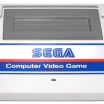
Welcome to Hardware Retrospective, a series that aims to tell the story of console gaming through the technology that defined it. Today, we’re going to look at SEGA’s first console, the SG-1000.
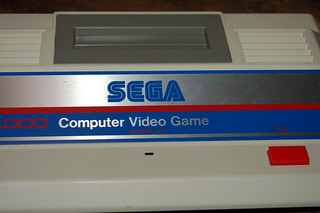
An elegant console design of a more civilized age
In the early 80s, the console market was a crowded yet very profitable venture in the United States, while companies like Interton and Grandstand brought gaming goodness to Western Europe. However, Japan was a different story.
One of the major problems was that game distribution rights were incredibly inclusive. This problem combined with the smaller amount of game developers meant that consoles made in Japan were always struggling for games, let alone good ones. The other problem is that, in those days, making an arcade-quality game that could be played at home was far too costly as an actual practical idea, especially if you wanted a single console with interchangeable cartridges. While companies like Epoch and Bandai had tried to tap into this market (in addition to the Atari and Intellivision clones that trickled in), most Japanese gamers still preferred the arcade experience over their compromised home counterparts.
It was in this climate that SEGA decided to seize the opportunity. Unlike the previous Japan-built consoles, SEGA had the advantage of good hardware (incidentally utilizing hardware nearly identical to the Colecovision and the upcoming MSX standard) and a large amount of arcade titles they could easily port. The SG-1000 hit the market on July 15 1983, able to deliver near arcade-perfect ports of many of SEGA’s classics on either cartridge or card (though the card-based games required an adapter). It had a memorable design, low-cost, and only one true competitor. The problem was that its competitor, released on the exact the same day, was the Famicom.
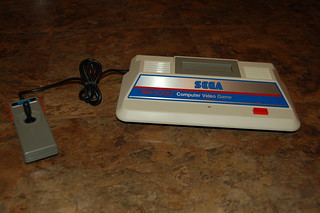
The controller is hard-wired to the system…

… but at least you won’t lose it
It’s a shame that hindsight has revealed the Famicom was a the juggernaut that it was, because the SG-1000 is a beautiful looking system with some great power and great games. Compared to the second generation consoles, this was one of the finest examples. Unfortunately, compared to the Famicom, the SG-1000 looked very regressive.
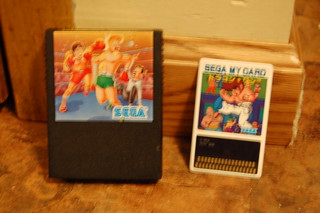
The immature child in me must point out that the name of the game on the right is “Dragon Wang”
One part of the system that definitely has to be addressed is the controller. Like many of the late second generation controller, it’s a joystick with two primary buttons on each side. It’s the kind of design that only works in theory. The joystick is too small for practical usage or gripping but too large for precision handling with a thumb. And the button placement means it’s difficult to have both buttons in easy reach unless you awkwardly cradle the controller in your palm.
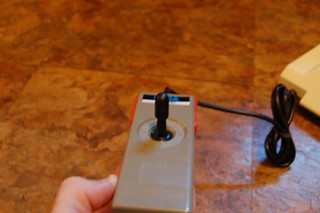
The controller. Also pictured is my hand trying to find a good way to hold it.
Feeling the pressure from the Famicom, SEGA decided to redo the design of the hardware after just one year on the market. The SG-1000 II distanced itself from the “Atari-era” design and replaced the joystick with a controller closer to the Famicom.

A lot of things have changed, but is it enough?
However, this came with problems of its own. First of all, while the SG-1000 may have looked closer to its second generation hardware, the SG-1000II is, to put it bluntly, aesthetically bland. It also failed to address the hardware’s actual weaknesses against the Famicom, merely changing its shell. The controller also has a small joystick over the directional pad that makes it literally painful to play, but it can thankfully be removed.
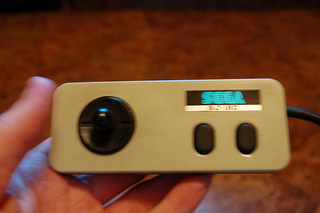
It’s also incredibly small.
After one more year, SEGA decided to upgrade the SG-1000 one more time. The Mark III (later the Master System) was a major hardware improvement to make it comparable (and superior in several ways) with the Famicom, and had the card slot built in. However, it was too little too late. By this time, Nintendo had entrenched themselves into the market and set up licensing practices to keep SEGA from ever getting the support it needed. The Master System only took off in territories that Nintendo ignored; it never came close to challenging Nintendo in the Japanese and American markets.
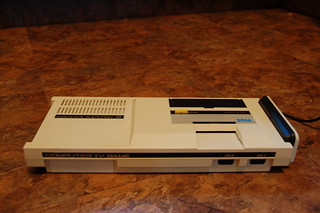
Third time’s the charm?
While the SG-1000 never made an impact in the market, it gave SEGA some much-needed lessons. They discovered that if they were going to see success in the console market, they couldn’t just play catch-up with Nintendo. They needed to beat them to the punch. They needed a machine with new ideas and the power to back them up. However, that is a story for another time…
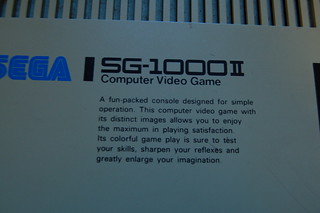
An inspiring message found on the SG-1000 II. Curiously, it’s in English.



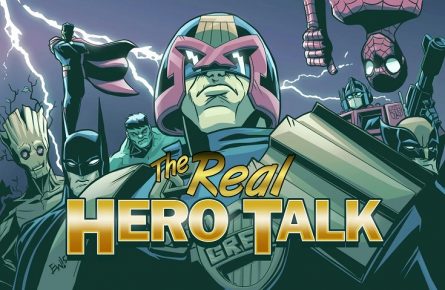



![[PROTOTYPE]](http://www.enthusiacs.com/wp-content/uploads/2020/03/title-104x104.jpg)
You know a system is old when the words “computer video game” is on it 🙂
Just in case you thought it was a toaster oven, folks.